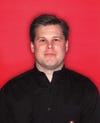Inside look at Kroger’s first Ocado robotic warehouseInside look at Kroger’s first Ocado robotic warehouse
Online grocery fulfillment centers to extend retailer’s geographic reach
April 16, 2021

Already have an account?
The Kroger Co. introduced its first Ocado automated online grocery warehouse this week in Monroe, Ohio, one of 20 planned in the United States with the U.K.-based e-grocery specialist.
At about 375,000 square feet, the Monroe customer fulfillment center (CFC) carries thousands of popular grocery products and can fill thousands of delivery orders daily, Kroger said. The facility also can support the fulfillment of pickup orders.
The Monroe CFC’s debut comes about 22 months after Kroger broke ground on the approximately $55 million facility. Kroger had announced a soft launch of the CFC when reporting fiscal 2020 results in early March.
“We’ve continually transformed the company, and this is one more evolution in that transformation,” Kroger Chairman and CEO Rodney McMullen said Wednesday in a virtual press conference on the Monroe CFC launch. “If you look at the last few years, and especially in 2020, it was a pivotal year for grocery e-commerce. We finished last year at over $10 billion in e-commerce revenue, and it was 116% growth year on year. One of the things that we’ve committed to is that, by 2023, we will further double our digital business going forward. That really positions Kroger to be one of America’s leading e-commerce platforms and companies.”
In 2020, Kroger more than doubled the number of e-commerce customers versus 2019, McMullen added.
Using artificial intelligence, advanced robotics and automation, the Monroe CFC is designed to provide more seamless and efficient fulfillment, picking and delivery for Kroger online grocery orders. Inside, more than 1,000 bots containing totes with products and ready customer orders dart across huge 3D grids — dubbed “The Hive” — managed by air-traffic control systems. When order delivery times near, the bots retrieve the products from The Hive and bring them to pick stations, where items are sorted for delivery. Algorithms control the pick-and-sort process to ensure that products are packed intelligently, with fragile items on top and bags evenly weighted.
Next, packed orders are loaded into a temperature-controlled Kroger Delivery van that can hold up to 20 orders. Machine-learning algorithms weigh factors such as road conditions and fuel efficiency to optimize delivery routes. Each CFC covers a delivery radius of up to 90 miles.
Shoppers place their orders via Kroger.com or the Kroger mobile app. Customers in markets served by a CFC will have their groceries delivered by a “knowledgeable” Kroger Delivery associate, Kroger said. The company plans an “industry-leading” level of customer service, with the delivery person ensuring order freshness and satisfaction, managing order changes, and informing customers of loyalty membership benefits, such as earned fuel points and digital coupon savings.
When unveiling their partnership in May 2018, Kroger and Ocado Group said they plan to open 20 CFCs in the U.S. over the next three years. So far, Kroger has announced 10 CFCs. , with sizes ranging from 135,000 to 375,000 square feet. Besides the Monroe facility, they include locations in Groveland, Fla.; Forest Park, Ga.; Dallas; Frederick, Md.; Phoenix; Pleasant Prairie, Wis.; and Romulus, Mich., as well as two unspecified sites in the Pacific Northwest and West.
Depending on its size, Ocado CFC will equal the sales of about 20 stores, according to Kroger. At full capacity, annual sales per module — the Monroe CFC has seven modules — are projected at $80 million to $100 million.
The Kroger Delivery network also will include smaller facilities plus spoke locations that will extend the area served by each CFC beyond its 90-mile range. The Groveland facility, now under a soft launch and expected to begin filling customer orders later this spring, marks a new market area for Kroger — Florida, where it currently operates no stores.
“We’re incredibly excited about Florida. When you look at the research, we find that in different parts of the state, Kroger has different name recognition. But when you look at the state overall, about 55% of the customers know the Kroger name, know that we’re in the grocery business and have a high regard for our freshness of product, friendly service, our own brands and those things,” McMullen said during a press Q&A, adding that Florida has a high number of people who moved there from the Midwest.
“So we’re very excited about Florida and very excited about the offer that we’ll have there. The CFC itself is designed to eventually serve the state and actually serve southern Georgia and southern Alabama,” he said. “Initially, we’re going to focus around the Groveland facility itself and then work our way from that. But it’s going to offer the customer something that’s not in the market today.”
About the Author
You May Also Like





.webp?width=300&auto=webp&quality=80&disable=upscale)
